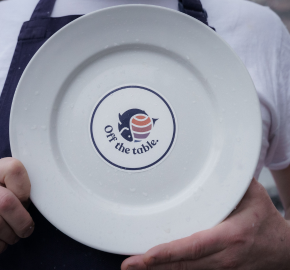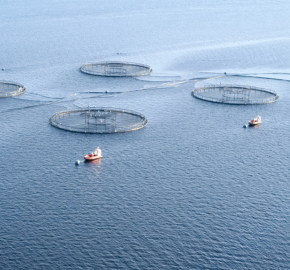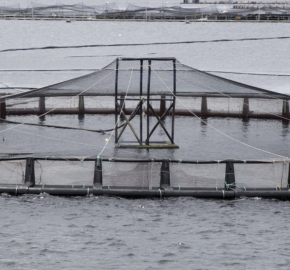Salmon farmers own data makes the case for much lower sea lice limits
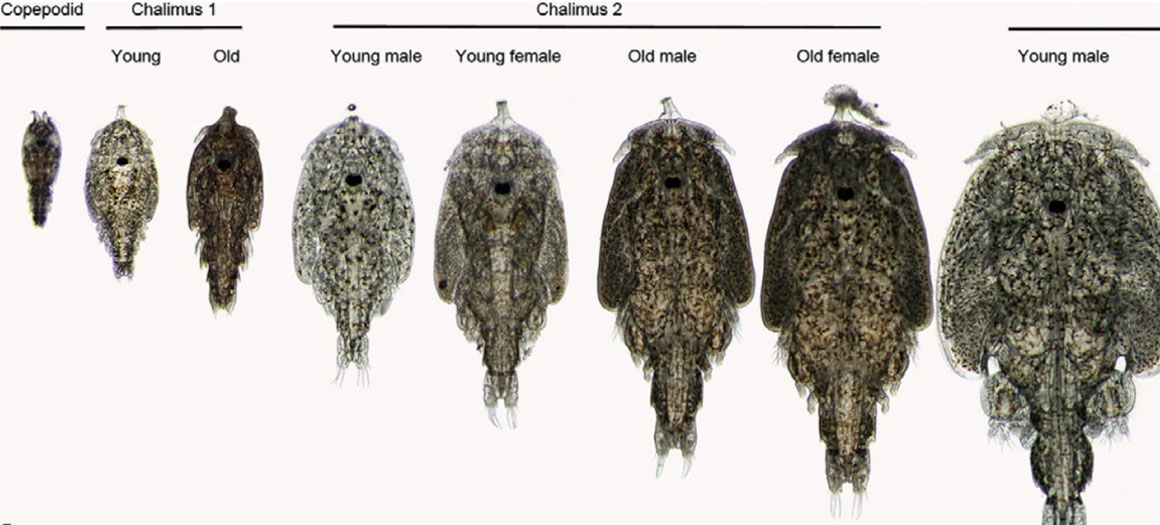
Corin Smith writes,
“Contrary to what you may believe salmon farmers go to great lengths to protect Atlantic salmon smolts from the harm caused by sea lice. The problem is they only protect the smolts inside the salmon farms, not the wild ones on the outside.”
Analysis combining multiple industry and government datasets reveals the low levels at which salmon farmers can, and do, successfully maintain sea lice to protect farmed salmon smolts.
The insight that follows comes with the following explanations and caveats.
Datasets from SEPA, Marine Scotland, Fish Health Inspectorate, Crown Estate Scotland and the Scottish Salmon Producers Organisation were all combined into a single proprietary database. The data covered the period 2018 and 2019. However, it is the case that all of the data is collected and reported by the salmon farming industry itself. There is no independent body which collects, verifies or audits any of the data. There is a lack of transparency with regard to operational methodologies, and therefore consistency of, sea lice count data. Where averages are used by the industry there is no transparency as to how these are derived. There is no information as to how any of these processes may have varied over time. The view we have of the industry is the one it currently permits us to see.
Sea lice counts are recorded by salmon farmers as often as daily and often at the individual pen level. This data is retained within the salmon farming corporations and extends back a period of perhaps decades in some cases.
Where average weekly sea lice numbers on salmon farms in Scotland breach thresholds outlined in The Regulation of Sea Lice in Scotland policy document, (currently 2.0 and 6.0 per farmed salmon and which refers only to a single life stage, gravid females, of a single species “Lepeophtheirus salmonis”) sea lice counts are reported to Marine Scotland. These reports are therefore sporadic, short lived and of little use for any form of regression analysis.
The Scottish Salmon Producers Organisation also receives sea lice count information from salmon farmers and publishes monthly sea lice averages for each salmon farm in Scotland. The mathematical basis for how the SSPO derives its averages is not published. The SSPO has been publishing this individual farm data since Jan 2018. The effect of using “averages of averages” is to remove a lot of potential volatility in the data.
By way of example Vacasay salmon farm in Loch Roag, reported to Marine Scotland the following weekly sea lice count data:
Week 23: 0, Week 24: “no data”, Week 25: 7.28, Week 26: 24.22
The SSPO monthly average recorded this as: 4.69
There are reasonable explanations for this seemingly implausible mathematical outcome, which reflect the possible use of weighted averages. Analysis of averages alone can be useful for deriving insight, but caution should be noted that they do not, apparently, account for any changes in scale. For example, two salmon farms may have the same average sea lice count, but one may be twice the size of the other. Analysis of absolute emissions is fundamental in assessing risk to wild fish populations. Absolute production/emission of sea lice from salmon farms is a function of an average sea lice number per fish and numbers of fish. Numbers of fish on salmon farms is not a figure which is recorded or reported in any publicly accessible dataset. The resulting abundance and location of salmon farm derived sea lice external to the farm is further dependent on a number of other factors including temperature, salinity, weather conditions and geography.
Clearly there are pros and cons to using a monthly “average of averages” approach, which depend on the intended purpose of the data. However, some useful insight can be derived, especially given the continuity of the dataset in comparison to anything else available. Hence, SSPO data forms the basis of the following insight.
The original proposition was that salmon farms do, in fact, maintain sea lice numbers at low levels, but only when farmed salmon smolts are present. It should be noted that a farmed salmon smolt may be 100gms or considerably larger. Wild salmon smolts are more likely to be between 50-80gms.
Even at lower levels, sea lice on smolts will result in lethal, and perhaps more significantly, sub lethal effects which impact the fish throughout the remainder of its life. In the case of farmed salmon, the effects of sea lice infestations may reduce growth rates and feed conversion, resulting in smaller more expensive to produce salmon. In wild smolts it may reduce the ability of the fish to survive migration, grow at the rate required to catch prey and/or impact fecundity. The immediate lethal effects of sea lice infestation on a smolt varies directly with its size.
The chart below (sea_lice_vs_length_production_cycle) plots the average sea lice count for all farms, for all months in 2018/19, against the stage of the production cycle the count was recorded. A straight average is used.
The simplest interpretation of this data is that sea lice levels are, in fact, effectively maintained at much lower levels in the early stages of a farmed salmon’s life in sea water than in later stages. Further, that there is a strong correlation between rising sea lice levels on salmon farms and the length of time fish have been in the sea water. It is of course the case that the longer a fish spends in sea water, the larger it will get. Length of production cycle is in effect a proxy for fish weight, a data point which is not publicly available.
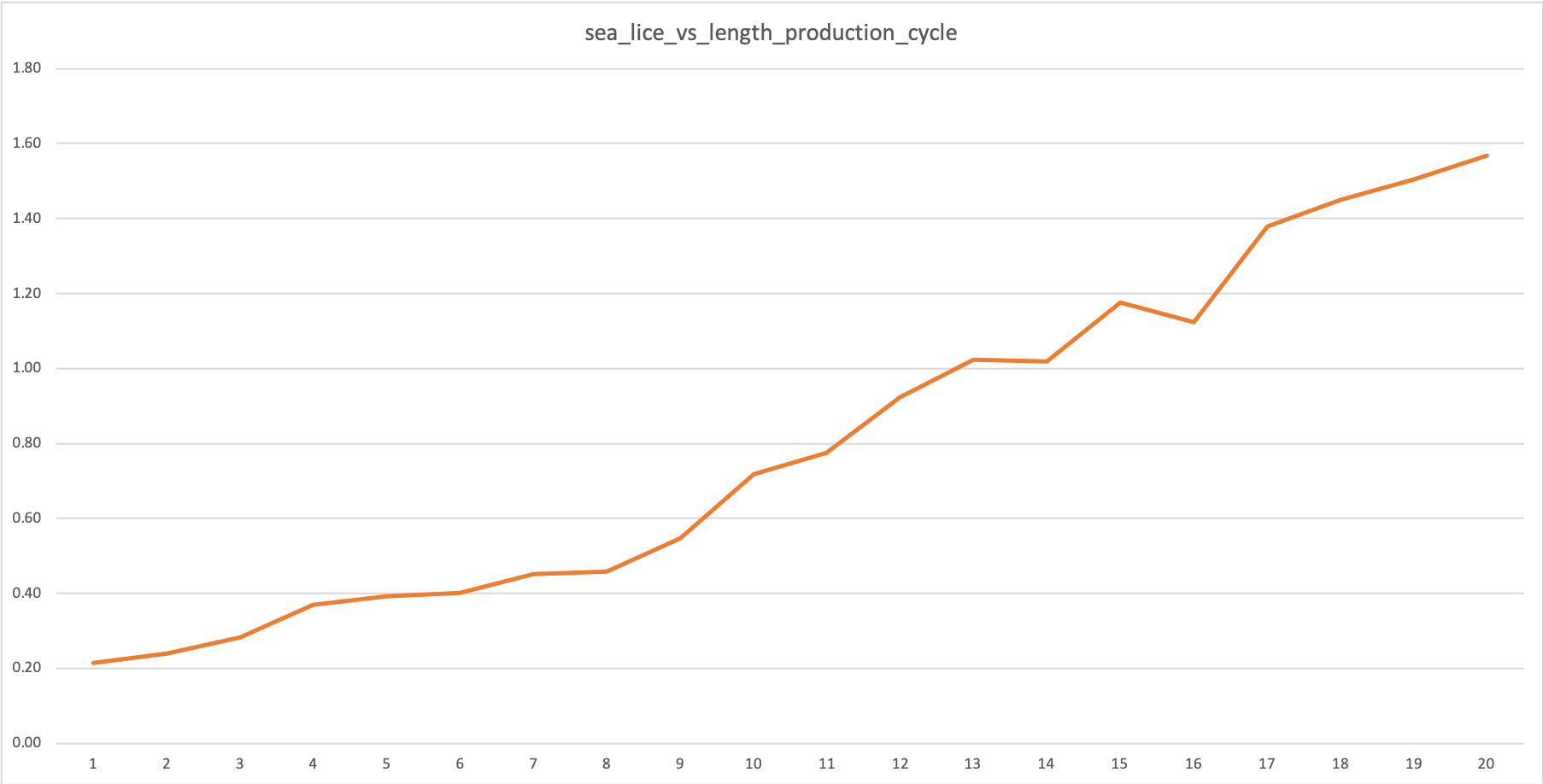
For reference, seasonality of sea lice numbers on salmon farms was also examined. This showed a slight seasonal effect where sea lice levels were higher in September and October. Seasonal effects may be the result of environmental factors; sea temperatures are at their highest in these months and so sea lice reproduce more rapidly. However, it could also be influenced by operational reasons such as larger numbers of farms reaching maturity at this time, relative to other months, in preparation for seasonal trends associated with smoked salmon and Christmas. It is, however, clear that from a statistical perspective that correlation with stage of production cycle is by far and away the dominant factor in sea lice abundance on salmon farms.
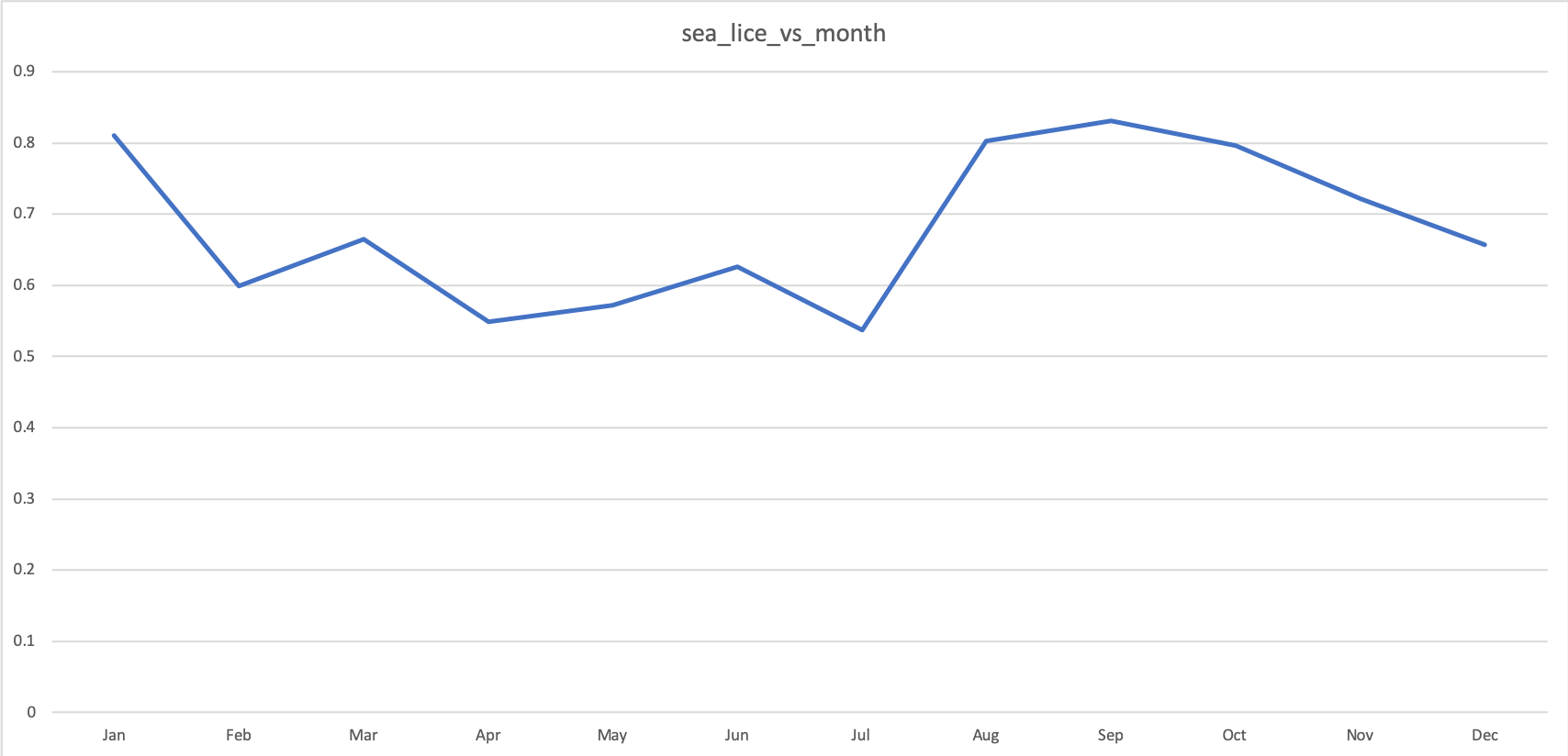
The table below, shows us that the vast majority of salmon farms managed to maintain monthly average sea lice levels below 0.5 sea lice per farmed salmon for the first twelve months of the production cycle.
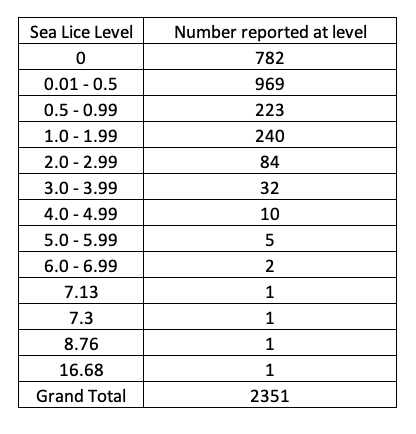
Out of a total of 2351 published counts for farms reporting their sea lice levels in the first twelve months of production, 1751 (74%) were at or below 0.5 sea lice per farmed salmon.
The outliers, particularly the figure of 16.68 reflect the fact that from time to time salmon farmers will transfer mature salmon from one farm, to an empty farm elsewhere, for fish health reasons. In the data this is recorded as being Month 1 of the production cycle. This issue occurs in a tiny number of cases.
It would clearly be helpful if salmon farming data indicated information such as fish numbers, fish weight and stage of production/lifecycle.
The chart below shows the same information.
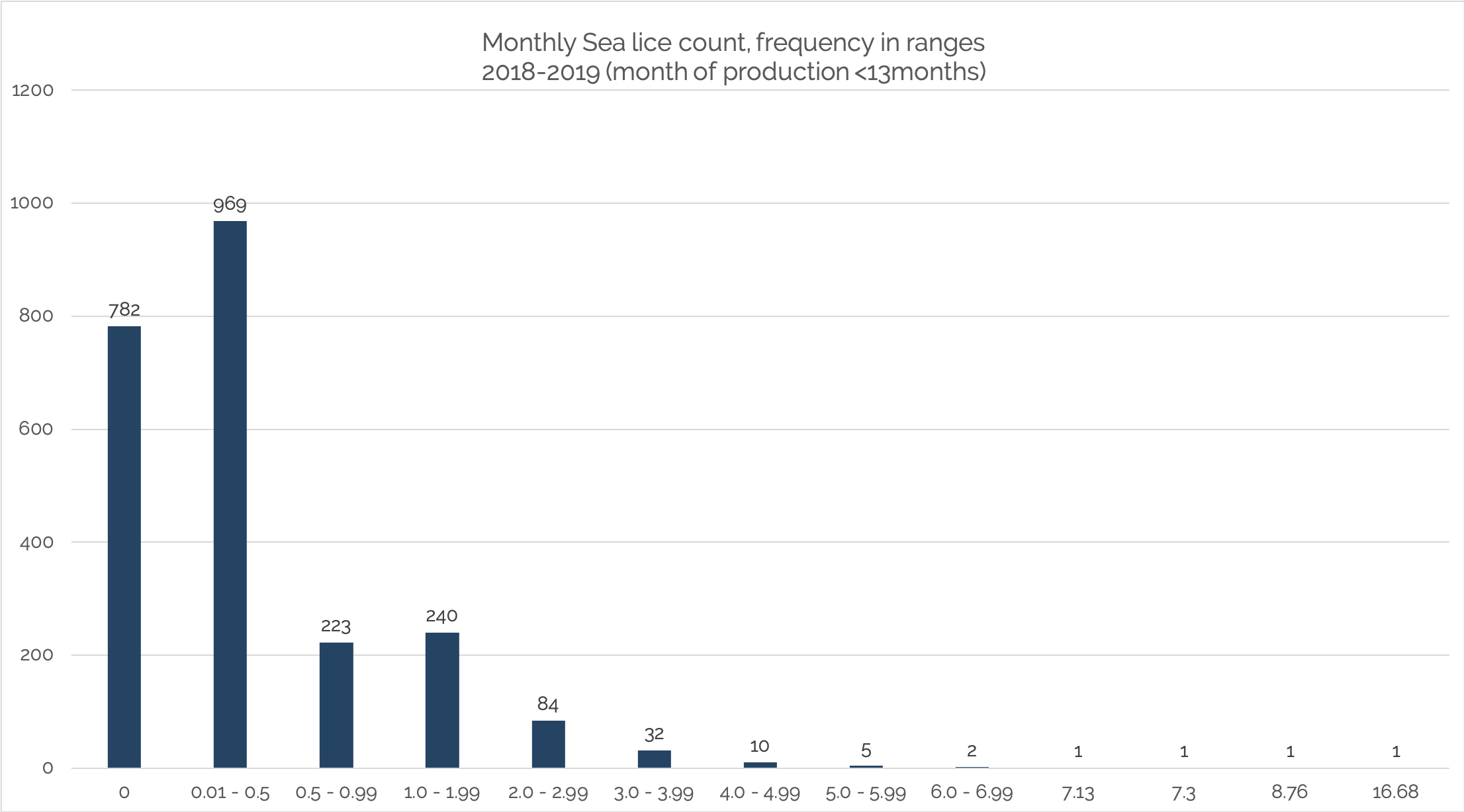
Growth rates and stocking size of farmed salmon smolts in seawater varies according to different strategies used by the operator. However, assuming a smolt is stocked at 100gms, roughly six to nine months later it will weigh around 1kg. The same size as a small wild grilse on the west coast of Scotland.
On average, we see that salmon farmers maintain sea lice levels at 0.2 sea lice per farmed salmon for the first two months of the sea water phase, when the farmed smolt will grow on from 100gms. This rises to 0.4 in month 4 and by month 10, once the smolt has grown on to approximately 1kg, the average sea lice level has been allowed to more than triple, to 0.7 sea lice per farmed salmon.
When one examines the raw data for the first twelve months of the sea water phase it is the case that there is low degree of volatility in the counts from month to month on individual farms, and also when compared to farms across all operators. This would indicate a relatively high degree of control is being exerted on sea lice numbers by salmon farm operators.
When one introduces data from SEPA’s databases relating to the use of the two main chemicals used to prevent sea lice on salmon farms, a striking picture emerges.
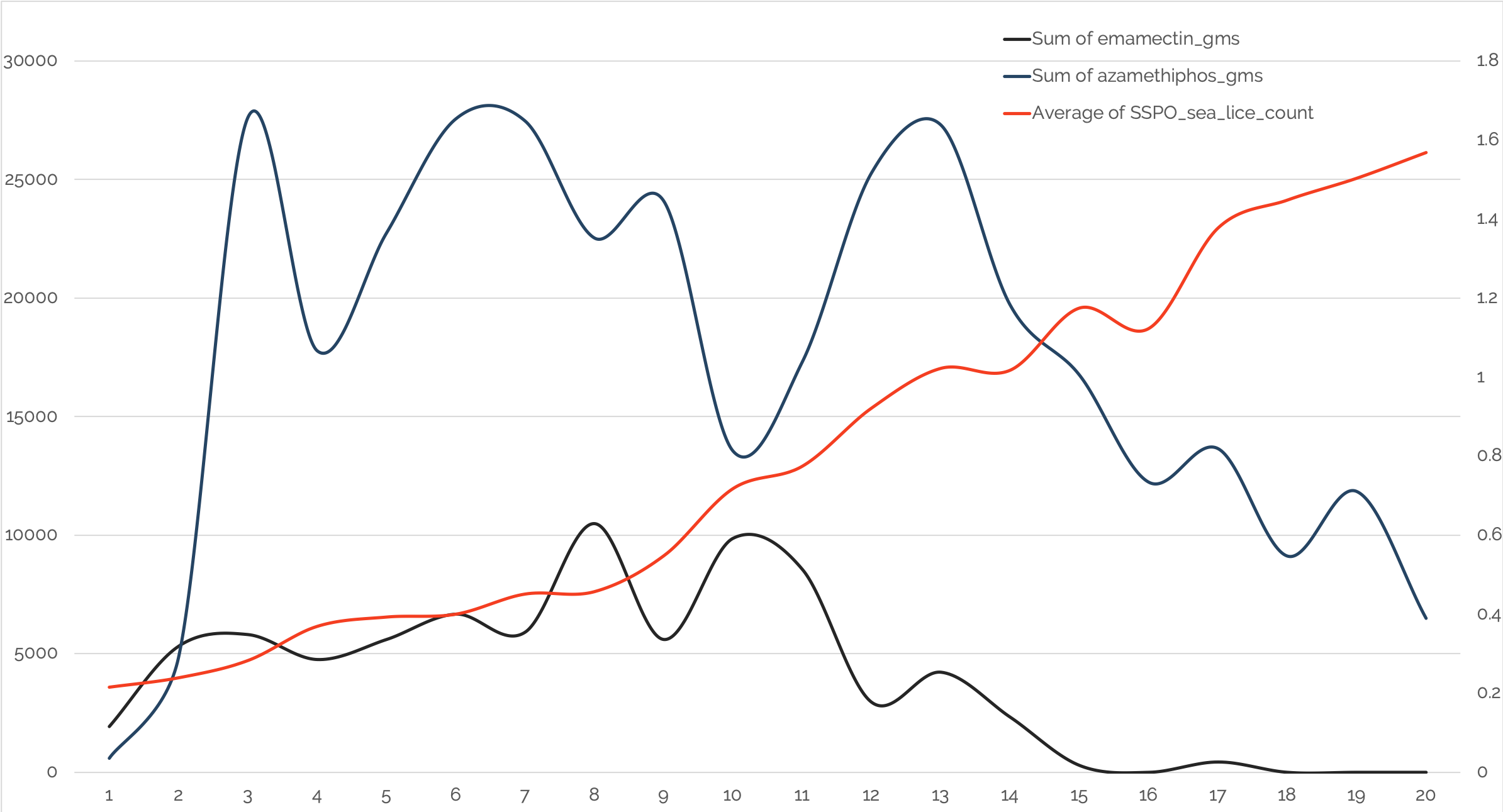
Prima facie it could be said that where salmon farmers use chemicals to prevent sea lice occurring, they do so predominantly in the first twelve months of the production cycle. One could argue this is when smolts would be most adversely affected by sea lice and therefore have the greatest commercial impact on a salmon farm. Every sea louse on a farmed smolt reduces the profit that will be made from it as an adult, as a result of reduced health and growth performance for the rest of its life. As the fish increase in size the sea lice carrying capacity steadily increases. The apparent need for preventative chemical measures declines. As farmed salmon increase in size and age, so the financial impact of higher sea lice numbers declines. To the point where at the end of the production cycle the impacts of very high numbers of salmon farm sea lice on the commercial value of a farmed salmon are negligible, and likely far outweighed by the cost of maintaining them at the low levels present in the early stages of production.
That is of course a simple interpretation. The apparent lack of chemical use in later stages may reflect a transition to well-boat based sea lice strategies (physical and chemical) which can begin to be deployed once the farmed salmon are larger. Well-boat chemical use is not recorded in SEPA’s data set. However, it remains the case that any treatment strategies deployed demonstrably do not maintain sea lice numbers at the low levels that were achieved in the early stages of production.
One issue worth noting is an emerging trend toward stocking farmed smolts at much larger sizes, having been grown on in land-based facilities, which for obvious reasons have no sea lice issues. The rationale for the operator is clear. Doing so effectively eliminates the first year in sea water, a period that clearly requires expensive early stage chemical prophylactics. This strategy, however, presents a new and serious long-term risk for wild salmonids. Much of the discourse about sea lice impacts from salmon farms relates to shocking peak sea lice counts. While damaging and troubling these are relatively isolated.
The table below shows the frequency of monthly sea lice counts for all salmon farms, for all months in 2018 and 2019, aggregated by ranges. One can clearly see the vast majority of sea lice occurrence takes place in the lower ranges.
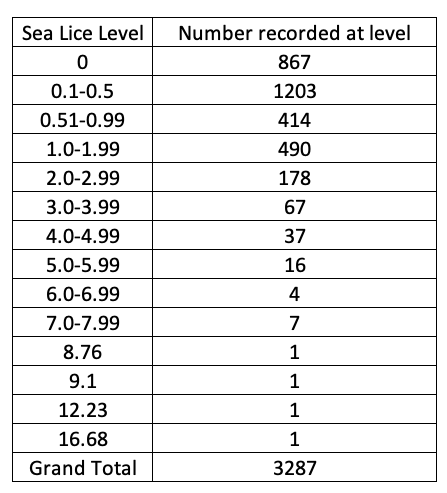
It is the ever-present background level of sea lice being emitted from salmon farms that should be of most concern in terms of wild fish conservation.
By effectively removing the first twelve months of the production cycle, all salmon farm production in Scotland would be late cycle all of the time, where much higher levels of sea lice are historically present on salmon farms. If 1kg smolts were stocked on salmon farms and salmon farmers adopted the same tolerable sea lice level strategy shown in the first chart, this would raise the average sea lice floor levels on salmon farms from 0.5 usually seen in the first twelve months, where wild fish have some hope of respite, to a new minimum average of 1.1. This could in effect more than double the minimum background sea lice levels present on salmon farms and being emitted into the environment.
Of course, the farmed fish would be in the water for less time, but this in no way changes the dynamics of sea lice ingress, incubation, proliferation and emission from open cage salmon farms in the late stages of production. Sea lice levels are, after all, a business decision. There’s no indication that salmon farmers would willingly commit additional capital and operational expenditure to reduce late cycle sea lice levels on salmon farms, below that which occurs now. While a shorter seawater phase would potentially benefit the salmon farming business model, it simply means the next batch of bigger farmed salmon arrive earlier in the sea, resulting in a greater constant intensity of salmon farm production.
On this basis shorter production cycles may be dramatically worse for wild salmon, and sea trout in particular, whose lifecycle is often entirely contained in a single location. This is an area which merits considerable investigation to quantify the risks to wild salmonids that a super-size smolt stocking policy on salmon farms could represent.
The Norwegian, Canadian and Faroese corporations that own 99% of salmon farms in Scotland see their potential profit in every farmed smolt. They recognise the harm that salmon farm sea lice will inflict on farmed smolts, and their profits, and so they go to great lengths and expense to protect their investment. It is unconscionable that salmon farmers do not accept an obligation to offer the same protection to Scotland’s wild Atlantic salmon smolts, from the same harm caused by the very same salmon farm sea lice, simply because they are on the other side of a net a few millimetres wide.
Corin Smith was previously commercial operations director at betfair.com with responsibility for insight and optimisation. Latterly establishing a data analysis consultancy serving FTSE and NASDAQ listed clients. He now consults for S&TC on communications and strategy.

